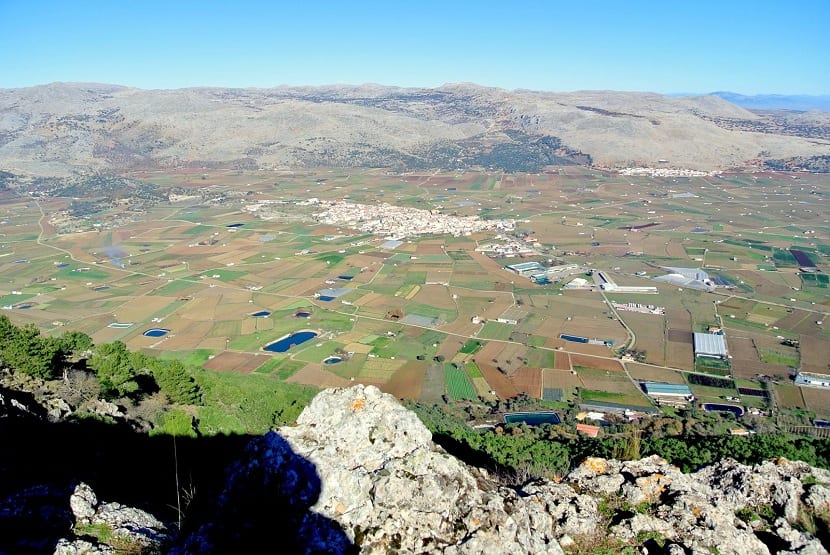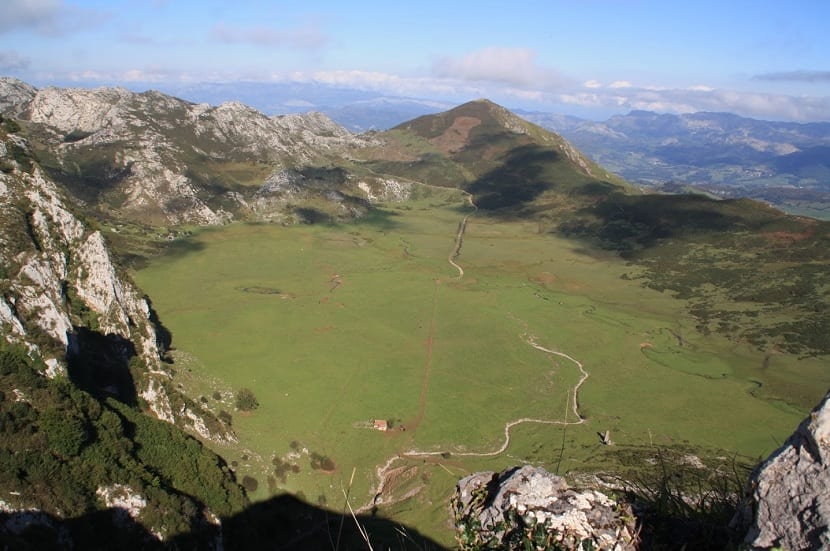
Inside what we call karst relief we have some interesting formations to know. Today we are going to talk about polje. It is a large sinkhole that is usually in the shape of an elongated valley and has irregular contours. The base of the massif is formed by karst rock.
In this article we are going to tell you all the characteristics of the poljé and the importance it has for the geomorphology of the terrain.
What is a poljé

This poljé is a massive subsidence that forms the valley and whose bottom is flat. It is made up of karst rock and has steep edges where limestone rock often outcrops. To be able to evacuate the water that accumulates due to precipitation, the poljé usually has a sump. The water usually runs through a stream that disappears through this sink and gives rise to groundwater. Thanks to this flow of water in an underground direction, formations such as the stalactites and stalagmites.
This formation can flood temporarily or permanently depending on the rainfall regime. If it is permanently flooded, it can become a lake since the accumulated water exceeds the drainage capacity of the sink and the diets of the limestone rocks. This is when the water level rises to the point of forming a lake.
The bottom of the poljé is flat and is made up of clay that comes from the decalcification of limestone. This clay is known by the name of terra rossa. Thanks to the formation of this type of clay, it can be said that the valleys formed by the collapse of the poljé are very fertile. These soils receive all kinds of sediments that gather at one point thanks to the depression.
Importance of sediments in the poljé

Sedimentation is the process in which solid materials are transported by water or air currents and deposited at the bottom of a reservoir, river or artificial canal. Normally these sediments precipitate by the action of gravity. Depending on the size, they can be suspended or diluted in water. The heaviest can be hauled but they need stronger water currents or a constant wind.
In the case of sediments transported on land, we can say that there are three types of transport. Crawling It is the type of transport by which the largest sediments moved. Then we have the saltation. It is the transport process by which the sediment makes small jumps due to the force of the current of air or water. For smaller sediments are suspension in both water and air and dissolution in only water. We also find flotation in those sediments that are less dense than water. For example, a piece of tree trunk or branch can float in the water of a river and be transported to the end at the mouth.
Almost any stream of water regardless of its flow, speed and shape has the ability to transport the solid material suspension. This material, which is in suspension, gradually precipitates thanks to the force of gravity until it reaches the bottom. If the water channel is fast, it can contribute to erosion on the banks of the river or the bottom of the channel. When the water level decreases, all the sediments that have gone to the bottom and that have great fertility come to the surface. Thus, the soils of the poljé usually have a great capacity to cultivate.
Most sedimentation phenomena are produced by the effect of gravity. While erosive phenomena predominate in the highest areas of our planet such as mountains, in the most depressed areas there are a greater number of sedimentation phenomena. These spaces of the lithosphere where sediments accumulate in large quantities are called sedimentary basins.
The poljé of Zafarraya

One of the poljé that we have closest and where we can verify everything we have commented is in the poljé de Zafarraya. It is located in one of the most important endorheic depressions of karst origin in the Iberian Peninsula. The climate where this polje has formed is the temperate continental Mediterranean. In these areas, annual rainfall is around 1000 mm. Sometimes it gives rise to floods depending on the intensity of the same. The soils are of the calcareous fluvisol type and there is a great irrigated agricultural activity.
The enormous capacity it has to cultivate these areas is due to the dragging and accumulation of sediments caused by the depression and the water course. The limits of the poljé de Zafarraya are Sierra Tejeda and Sierra Gorda. In this town there is the line that separates the provinces of Malaga and Granada adjoining the Axarquia region. Thanks to the fertility of the soils that are formed by the poljé, livestock farming can also be used as a main resource.
In this area we find the Zafarraya plains, known for being an extensive valley of about ten kilometers. Both the rainwater and those collected by the rivers belong to the Almijara, Tejeda and Alhama Natural Park. The natural outlet of the water is located in one of the best known large sinkholes found in the lands of Loja and Marchamonas. When the water reaches this sink it is lost underground. It is thought that this is due to the abundance of springs and fountains that are observed in the municipality of Loja.
If not for this subterranean sinkhole, the entire area would remain under water, forming a large lake. On some occasions, when rainfall exceeds the capacity of sinks to release water, small ponds form. This accumulation of water and humidity that was a great positive aspect for the formation of ideal soils for agriculture. Due to the boom in agriculture in these areas, the water table is being depleted with the excess use of water resources.
I hope that with this information you can learn more about what a poljé is and how important it is.